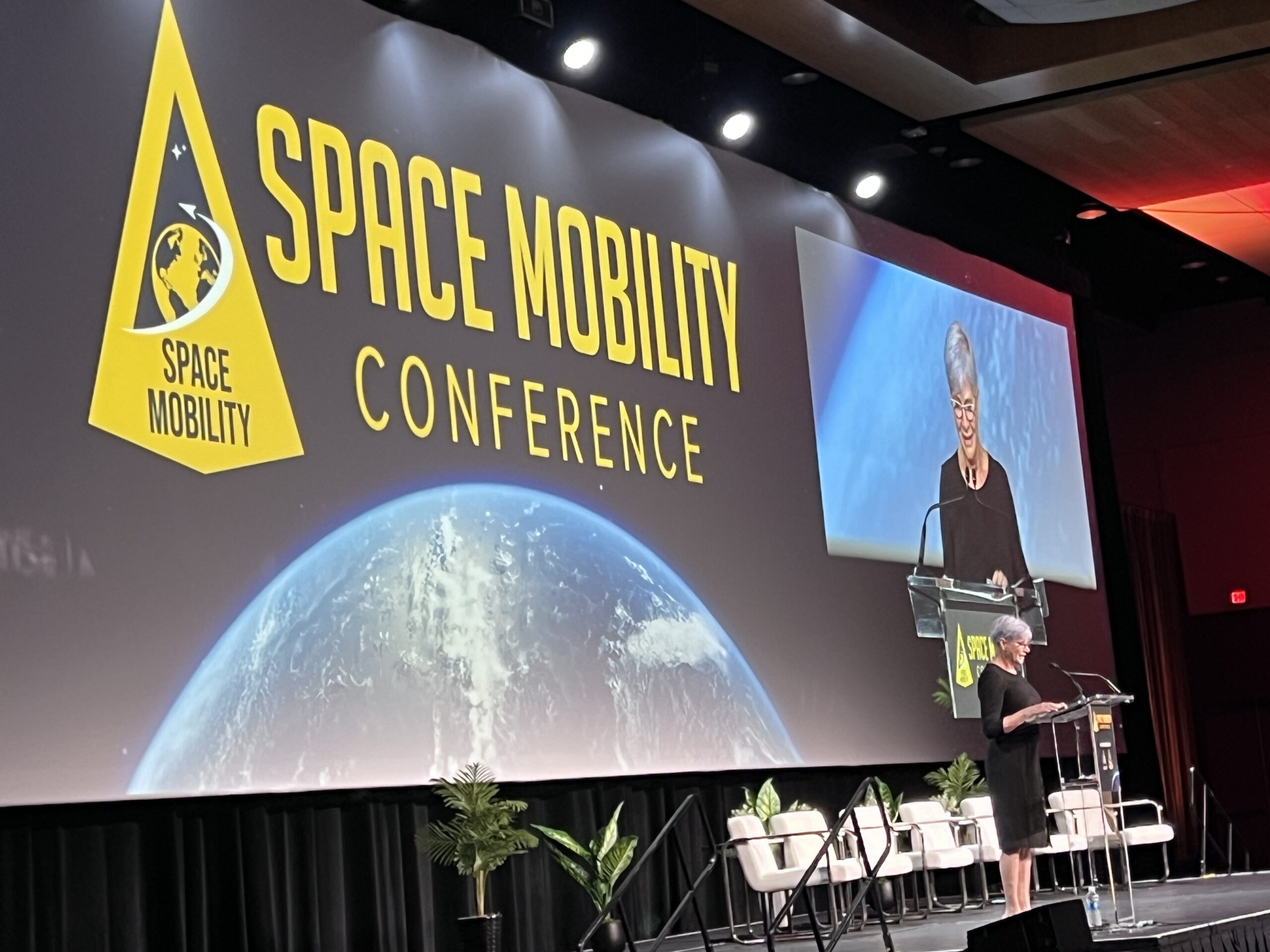Products You May Like
ORLANDO, Fla. — The emergent on-orbit servicing market faces a case of misaligned expectations. On one side, companies developing technologies to provide satellite maintenance, repair and other on-orbit services seek an early government commitment to bring about private investment.
A flagship customer for these services, the U.S. Space Force, has funded development projects and demonstrations, but it’s not ready to become an anchor customer as it continues to define its requirements and realign budgets.
A clear signal of future demand is needed sooner rather than later, as companies struggle to secure funding based solely on long-term market potential, Robert Hauge, president of SpaceLogistics, said Jan. 30 at the Space Mobility Conference.
SpaceLogistics, a subsidiary of Northrop Grumman, provides in-orbit satellite services to commercial companies and is seeking new military customers.
Col. Erik Stockham, director of the Space Warfighting Acquisition Delta, said in-space services are “not going to be a government directed or government mandated development effort. This is going to be about leveraging commercial,” he said during a panel discussion at the conference.
Bridging ‘valley of death’
Others point to early government investments in launch, remote sensing and other space technologies that enabled markets to develop privately, arguing that the on-orbit sector should follow a similar path.
Industry capabilities in the area of space mobility and logistics — to increase satellite lifetimes, to relocate satellites to avoid debris, inspect spacecraft for damage, refuel and upgrade existing satellites — “will enable humanity’s return to the moon and beyond,” Diane Howard, director of commercial space policy for the White House’s National Space Council, said in a speech at the conference.
“We need to keep doing these things,” she said. “But we cannot expect this mission area to develop just from plus ups and oversight. We can’t expect to bridge the valley of death through S&T [science and technology] programs, and industry accelerator programs alone. It won’t happen on the pace that we need to maintain U.S. leadership.”
The industry has to have a “clear demand signal from government users,” including the Pentagon, NASA and the National Reconnaissance Office, Howard said. “We need to identify and prioritize resources, funding and personnel. We need requirements for the use of mobility and logistics. And we need roadmaps with prioritized lines of effort and initiatives. We need creative acquisition strategies with public-private partnerships.”
“Strategy, clear pricing, clear requirements and real funding are needed to send a consistent and reliable message to investors, to the private sector and to our international allies and partners,” Howard insisted.
Message that the ‘market is real’
There is enthusiasm in the commercial sector for these services, said Hauge, but it’s important for the Space Force to send a “message to the satellite operations industry as well, that this market is real, these are capabilities that the U.S. government is buying.”
Clare Martin, executive vice president of the satellite-services company Astroscale US, said commercial firms don’t expect to be entirely dependent on the government but organizations like the Space Force can help by setting interoperability standards for the industry so commercial servicing satellites, for example, are able to dock with government spacecraft to provide services.
“As an industry, we are in favor of common interfaces. There is no one company that is going to solve the space mobility and logistics problem for the entire world,” Martin said at the conference.
The adoption of standards will help the industry succeed and in turn “help provide the solutions that you will need,” said Martin.
Protecting IP
Stockham noted that some companies are wary of allowing the government to set standards for fear of having to hand over sensitive proprietary data about their products. “Obviously, that’s a tension that exists all across government procurement,” he said.
The Space Force wants competition in the market, he said. “But we also have to allow multiple participants in that marketplace to interface together. We’re taking the initial steps of this by identifying a couple of different standards that we want to investigate.”
Martin insisted that standard interfaces are welcome by the industry. However, companies don’t want to share intellectual property that gives them a competitive advantage.
“We’re talking about the IP that is buried in the algorithms for rendezvous and proximity operations,” she said. “I want to caution is just generically lumping everything just into an IP term. There are different elements. And as an industry, we’re very much in favor of open standardization.”
